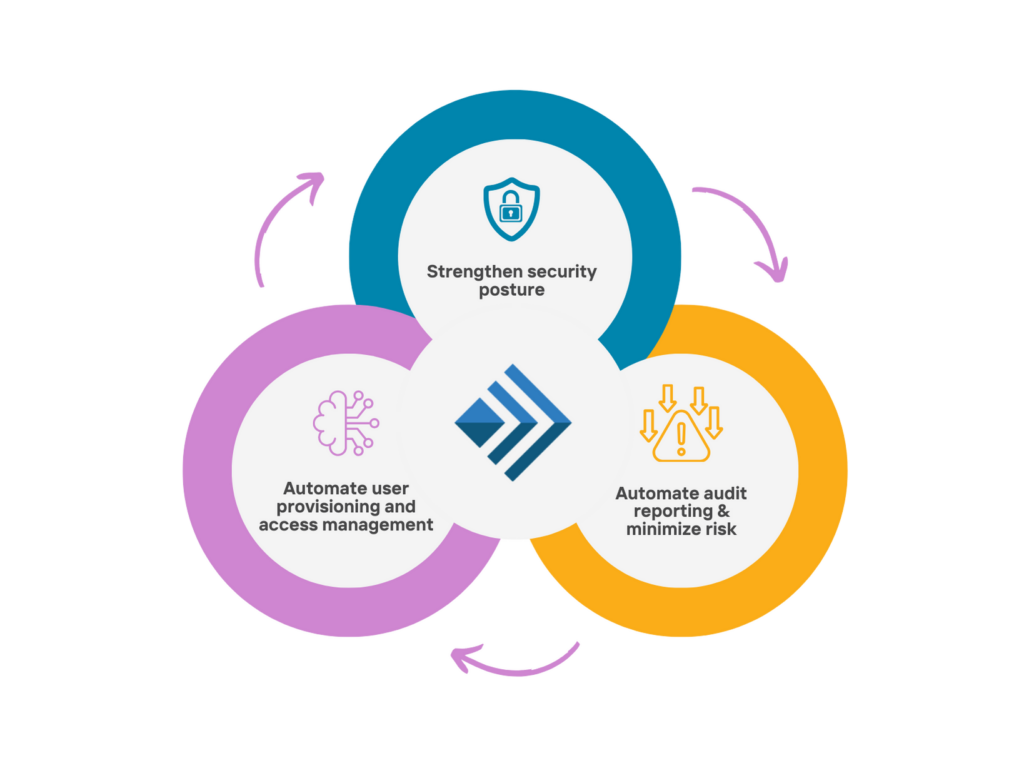
Your identity analytics serve as one of the primary guideposts on your road to achieving greater IAM maturity. When you’re stuck in the metaphorical blizzard of junk data collected during daily operation, you must know the shortest routes to where you need to be before you freeze. When navigating the treacherous landscape between AM, CIAM, IGA, and PAM, clearly defined and meaningful analysis is your best bet for moving forward, and not off a cliff.
Perhaps you understand the broad strokes of how identity analytics boost your maturity. Yet you remain unsure how a strong analysis service will specifically impact your IAM apparatus. Here you can explore the fine details of identity analytics for all four domains. Thus you’ll come to understand why an optimal metric and analysis platform is so important for achieving optimal IAM maturity.
Identity Analytics for Access Management
An AM identity analytics solution primarily concerns the evaluation and enforcement of access request policies. Systems metrics include login performance, accuracy, abnormalities, response times, and self-service performance. Business-oriented metrics include application SSO, federation performance and portfolio, and frequency of AM service utilization. An information collection tool extracts these data sets from the system’s raw event information. Then the analytics platform interprets them into service KPIs and live insights.
Measurement of these metrics occurs through a number of benchmarks. These include pre-defined parameters of applicable use cases, historical patterns, and the watermarks provided by the other technology partners/vendors. This information draws from several sources. These include target applications, application integration, the profile details of the requester, the source of the access, and user authentication methods. Additionally, it can also provide visibility of various access patterns, peak-load, and top-accessed applications. To make the analytics dashboards and metrics accessible, data from organization’s CMDB can be fed into the analytics service. This provides the user with real-time analytics of security events and threats.
These analytics guide stakeholders in their understanding of the state of their AM maturity. In turn, this enables efficient decision-making, helps plan for risk mitigation, and also bridges knowledge gaps. Informed by these results, optimal implementation strategies enable organizations to improve their security posture and identity maturity through live insights. When paired with an identity orchestration service, that implementation invites exceptional ROIs.
IAM Maturity for Customer Identity and Access Management
A CIAM identity analytics solution is essentially an extended version of AM which includes all AM metrics with the addition of customer identity-related information. In addition to AM metrics, CIAM dashboards presents data for several focused areas. User onboarding (registration, verification, proofing), self-service (profile/MFA management and password resets/recovery), and access sources (device printing and profiling). The analytics service collects this data from internal AM systems, custom applications, 3rd-party providers, and mobile services.
Some of these metrics analyze against pre-defined quantifiers. However, many of the metrics compare best against historical patterns unique to the enterprise. After all, while CIAM directly benefits your customers, their individual experiences will be subjective and harder to fit into an orderly format. This makes involvement by experienced experts all the more important in achieving an accurate analysis solution for CIAM. This analysis provides you with crucial information about your CIAM maturity.
Most CIAM solutions in the industry place particular importance on adhering to customer identity protection regulations. Therefore, it is critical for businesses to identify any breach or violation in the quickest way possible. The real-time dashboards for CIAM analytics enable businesses to have live visibility on their platforms for any identity-related mishap. This not only helps achieve compliance on paper but also improves overall customer experience as well as your enterprise’s detection and remediation capabilities. As well as, of course, your CIAM maturity.
Identity Governance and Administration and IAM Maturity
An IGA identity analytics solution considers user identities, accounts, roles, and entitlements that users have access to. IGA metrics can be broadly classified based on the processes as well as the services that they administer. This includes user groups, auditing access request logs, events related to user life-cycle management, certifications, monitoring of scheduled jobs, and automated processes for failures. Additional measurements include the total number of active users, orphan accounts, average onboarding time, and termination success/failure rate.
Given the extremely complicated minutiae of IGA analysis, implementing an effective identity solution can be overwhelming. Fortunately, due to the automated nature of many IGA aspects such as auto provisioning/deprovisioning, meaningful analysis is at least partially expedited. However, the effectiveness of this automation must start with an effective IGA solution. If the core IGA platform is flawed, then the metrics collected will be as well and two aspects of your maturity will suffer. This indicates a fundamental fact about analytics: they must be linked to effective IAM.
IGA analytics must also consider high-level controls. These include JML (Java Modeling Language) control, access re-certification controls, and SoD (segregation of duties). For example, Simeio IO analytics collects the data around these identity controls from one or more systems. Then the Simeio IO analytics correlation engine converts the unstructured data into a structured model. Thus, with your overall identity intelligence enhanced, you can effectively utilize your controls to achieve greater efficiency and security. When all these analysis systems are properly implemented, your IGA maturity skyrockets.
Privileged Access Management and Identity Analytics
PAM analytics are broken down into a few sub-categories. These are Privileged Account & Session Management (PASM), Privilege Elevation & Delegation Management (PEDM), Secrets Management, and Cloud Infrastructure & Entitlements Management (CIEM). Though often managed by a central service, each is implemented as separate solutions. Hence multiple sources provide the analytics information, each with unique use cases to execute. Among the key information gathered for analytics. The key metrics are system uptime, capacity utilization, licenses consumption, onboarding trends, and compliance.
PAM metrics analysis compares a pre-determined quantifier with a system’s measured performance. The predetermined parameters could be anything including a service-level agreement, an industry benchmark, or a compliance standard. Examples include as system availability, password compliance percentage trends, or revocation/inactivation of privilege access.
The results of the identity analytics help you answer several important questions about your PAM maturity specifically and your identity fabric in general. Are adequate process and controls in place for compliance? What are your key security/IAM gaps and how serious are they? Where they are in comparison to their peers? These questions help prioritize key security initiatives, achieve near-term and strategic objectives, and achieve effective PAM implementation.
Analysis Maintains IAM Maturity
Your analytics form a vital aspect of your overall identity maturity, but they serve an even more important role for your enterprise. By establishing a strong analytics apparatus within your organization, your hard-won improvements to maturity become much easier, and indeed possible, to maintain. Therefore, without a clear view on developing issues and emerging improvements, even the most cutting-edge identity platforms will become outdated, outpaced by new threats and better systems.
With a strong end-to-end maturity service predicated on implementing analytics from the start, your identity maturity investments deliver exceptional returns. But in the long run they will only deliver a maximal ROI if that service includes an enduring maturity strategy. Therefore you must select a service that puts identity maturity at the forefront of their offerings. If they don’t mention maturity or lack a standardized maturity measurement system, look elsewhere. You cannot neglect a single facet of your identity fabric, either as a pain point for users or a weak point in your attack surface.
This is why identity analytics form the core of analyzing your identity maturity. Because each domain supports the performance of the others, understanding the complex interplay between them comes down to expertise. Executing upon that understanding to provide real-time and actionable analytics requires further expertise. All this must employ extensive automation that is easy to use, accurate, and secure. Ultimately, only identity orchestration from a maturity-minded service provider can deliver the full-scale analytical needs of a major enterprise.

